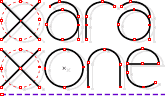|
|
|
To conclude, there has been a movement lately to 48-bit color (16 bits/pixel for each color channel), particularly with digital cameras and the DNG file format. Only in certain ways does 48-bit color affect the color management Iíve described in this article. Instead of 16.7 million possible colors, you now have 4.2 billion colors available, clearly you have more colors to work with, but all these colors can be handled by the LAB model descriptor because it handles space and not the number of colorsóthink of a space as being under and overpopulated. The only real problem that exists with 48-bit color capability at present is seeing itóyour monitor and video subsystem are 24-bit. But working with what you literally canít see is a temporary inconvenience. Most assuredly your system will evolve to 48-bit capability through future upgrades and at present 48-bit images usually display like 24-bit, but if you send a copy to a print house that offers 48-bit services, the print will look noticeably more lifelike. AFTERWORD: Brightside Technologies www.brightsidetech.com, has a 37Ē display thatís 48-bit. Itís $50,000, so add 5-10 years and itíll come down within reach pricewise. The human eye has a million-to-one contrast evaluation, and this monitor comes close to it. Unfortunately, the brain can only process about 11 tonal zones at a time (thatís why traditional photos like Ansel Adamsí look so deepóthey have at least 10 zones); itís the integration of all the contrast zones from second to second as your head pans that the brain processes as a wide spectrum. $50,000 used to buy a house, into which you put a $50 TV Gary David Bouton is a fellow Xaraist and the author of 24 books on computer graphics. He can be reached at Gary@theboutons.com or www.theboutons.com.
|
|
The Xara Xone Guest Tutorials ©2005 Gary W. Priester All rights reserved
|

